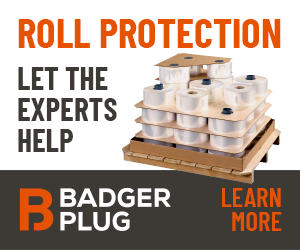Flexibility in Multipacking & Shrink Bundling
By Maria Ferrante, Senior Director, Marketing and Communications at PMMI

With stores stocking more types of product on the shelf, shrink bundling allows manufacturers to easily adjust pack sizes based on store requirements.
One of the biggest benefits of shrink bundling is flexibility and adaptability. Since one width of film can adapt to multiple collations of product, it is an ideal solution for manufacturers of multiple pack sizes and styles. Additionally, with stores stocking more types of product on the shelf, shrink bundling allows manufacturers to easily adjust pack sizes based on store requirements.
But these benefits can also create challenges. In today’s multipacking and shrink bundling environment, the need for flexibility and repeatable changeovers is of top importance. This is driving equipment design, even on highly complex equipment. It is also influencing the “dumbing down of machines,” specific to changeover and flexibility, where responsibility is taken out of the hands of operators. Users are demanding higher overall equipment effectiveness (OEE), longer mean time to failures and greater predictability.
The proliferation of SKUs has dramatically increased bundling speed and the need for increased automation. As multipacks and variety packs are expanding the number of SKUs, they are also driving up the number of robots used on the packaging line, according to the Robotics Innovation 2 Implementation report from PMMI, The Association for Packaging and Processing Technologies. Robots can support increased productivity, greater efficiency and line flexibility to support increasing retail demands.
These retail demands also include the move to more sustainable solutions. Sustainable solutions continue to be a top priority to manufacturers and one of the main reasons brand owners are looking to shrink bundling and multipacks. This packaging approach enables consumer packaged goods companies to eliminate costly corrugate. Additional benefits achieved by shrink bundling throughout the packaging life-cycle include reducing shipping costs associated with the weight of corrugate compared to low density polyethylene (LDPE) and increased space available because of the reduction of wasted headspace in chipboard containers. Lastly, LDPE’s 100 percent recyclability make it a great option when looking to achieve sustainability goals.
While shrink bundling is not new technology, it offers opportunities for brand owners and equipment manufacturers to work together to design equipment that fits many of the challenges being faced today.
Here are some tips to consider for those selecting equipment in this dynamic environment:
-

Shrink bundling offers opportunities for brand owners and equipment manufacturers to work together to design equipment that fits many of the challenges being faced today.
Look to down-gauge. The use of polyethylene and similar thin films is a huge cost-cutting opportunity. Many packagers use a heavier gauge film than they need because a thicker gauge, more premium film buys a lot of “forgiveness,” allowing companies to compensate for setup issues, less efficient machines and operator error. While down-gauging may involve changes to equipment and set-up, it can pay off in cost savings.
- Identify the right technology platform. Whether it’s a wraparound tray, corrugated pad or unsupported shrink bundle consider the limits of your product, packaging and distribution environment. Rigid containers much as metal cans easily transition from a tray to a pad. But what if you have a 3-ounce plastic bottle with an hourglass shape? Test, test and do more testing to see if it’s even possible to move from a tray to a pad to an overwrap. Shrink-only packs will save corrugated costs, but such a move requires foresight and planning to ensure package integrity.
- Speed matters. Packing or bundling speed is a key consideration. The number of products on a pad or shrink bundled is an important consideration this as you examine potential equipment. While there are no hard and fast rules, the impact of product development on bundling speed cannot be ignored.
- Size matters as well. Don’t undersize the length of the shrink tunnel. Film takes a certain amount of time to heat up and shrink. Selecting shorter heat tunnels with higher heats can result in poor packages as these smaller chambers have a tendency for hot spots.
- Look for shrink tunnels with lower air velocity. Tunnels with high velocity airflow can disturb the film, causing more wrinkles.
- Storage and handling issues are important. Proper storage of shrink film is essential. Are film roll tolerances within specifications (e.g., tension consistency, minimum edge curl)? Pay attention to what the equipment incorporates to manage film tension and consistency, features such as vacuum control for film edges.
- Don’t shirk on capacity. Flexible robotics requires extra capacity; have one or two extras so if one machine fails, your whole line isn’t down. Designing in excess packing capacity can improve overall uptime.
- Consider the ultimate environment and display. If a product is affected by temperature, case packing is preferable to shrink bundling. If product visibility is important, shrink packing is better, unless the product is affected by shrink bundling pressure.
- Flexible implications. Flexible materials are having an impact on multi-packing. Certain flexible bags cannot be shrink bundled because they are prone to distortion; they must be tight-wrapped. Otherwise the shrink bundle could be fused onto the primary packaging.
But most important when considering a move to multipacking or shrink bundling, work closely with equipment suppliers to ensure you have the best solution for the application.








